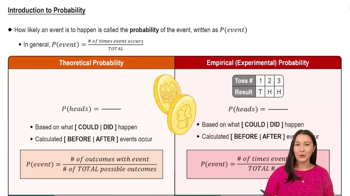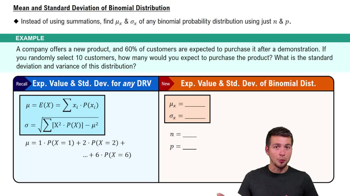Here are the essential concepts you must grasp in order to answer the question correctly.
Probability
Probability is a measure of the likelihood that a particular event will occur, expressed as a number between 0 and 1. In this context, it helps determine the chance that at least one individual in a combined sample of 50 people is infected with HIV. Understanding how to calculate probabilities, especially in composite scenarios, is crucial for interpreting the results of the combined blood tests.
Recommended video:
Introduction to Probability
Binomial Distribution
The binomial distribution is a statistical distribution that models the number of successes in a fixed number of independent Bernoulli trials, each with the same probability of success. In this case, it can be used to calculate the probability of having at least one positive HIV test in a sample of 50 people, given the known infection rate. This concept is essential for understanding how to apply statistical methods to real-world testing scenarios.
Recommended video:
Mean & Standard Deviation of Binomial Distribution
Composite Sampling
Composite sampling is a technique where multiple samples are combined into one for testing, which can reduce costs and time in laboratory settings. This method is particularly useful in medical testing, as it allows for efficient screening of large populations. Understanding composite sampling is key to grasping how the combined test results can indicate the presence of a disease among individuals in the sample.
Recommended video:
Sampling Distribution of Sample Proportion






